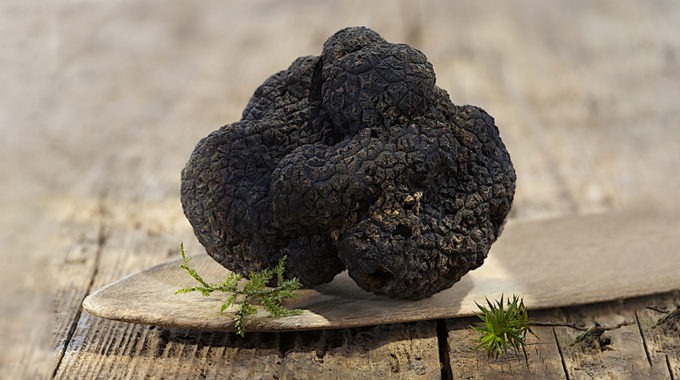On the hunt with Ganymede Truffles
For fungi-loving foodies, winter’s arrival means one very important thing: truffles. These earthy, aromatic bombs of flavour have been revered by chefs and epicureans across the globe for centuries. In French haute cuisine, they’re known as “black diamonds”. Eativity meets Wendy Burdis of Ganymede Truffles, an organically run truffle farm that produces premium black Perigord truffles in the NSW Southern Tablelands.
While truffles have long been seen as a European delicacy, these days some of the world’s best truffles are being grown right here in Australia. Despite the fact that we’re relative newcomers in the wonderful world of truffling – the first Aussie truffles were harvested in 1999 – Australia is now the world’s fourth-largest producer of the highly-prized French black or Perigord truffle. Manjimup in Western Australia is our main truffle-growing region. However, there’s now increasing production in Tasmania, the ACT, Victoria and NSW.
According to the Australian Truffle Growers Association, we now produce around 20,000 kilos of truffles each year. This might not sound like much in comparison to some of our bigger-yielding crops, but when you consider that truffles sell for $2000+ per kilo, it’s certainly nothing to sniff at. As truffles are harvested in winter, our growers also benefit from the fact that they can supply fresh truffles to the northern hemisphere during their off-season. In fact, about 75 percent of Australia’s truffles are exported.
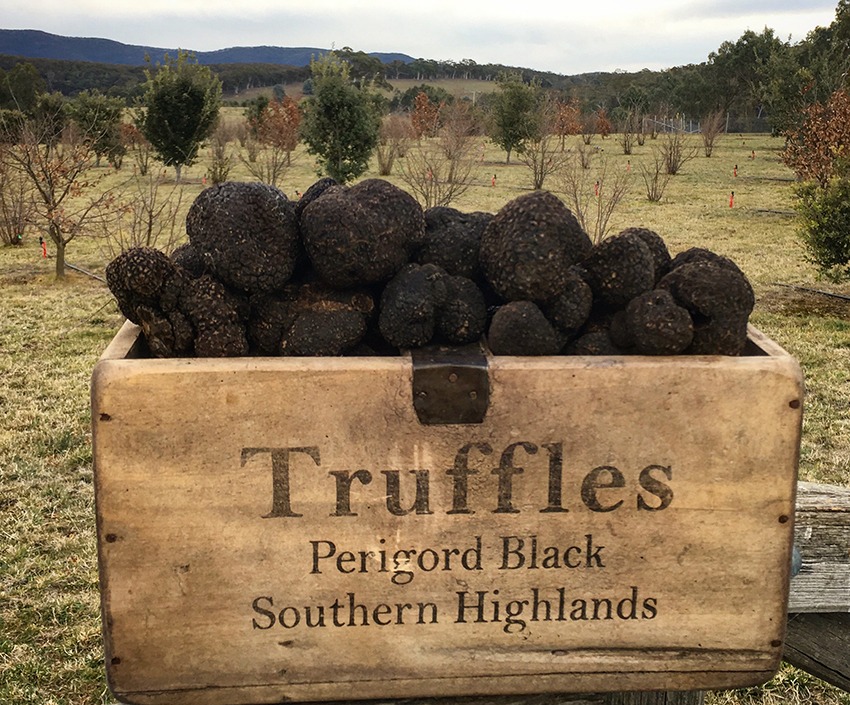
Heavenly scent
Wendy Burdis of Ganymede Truffles has been producing black Perigord truffles for about 10 years. When she and her former husband bought the property in 2005, the plan was to farm cattle, but Burdis says she found it too distressing.
“I hated the trucks coming to get the cows,” she admits. “So my ex-husband said that if we weren’t running cattle, we had to do something else that was going to make money.”
After suggesting everything from alpacas to wasabi, Burdis finally hit on truffles, and the decision to make the switch to truffle farming was settled on.
Attempting to grow truffles can be a bit of a gamble. You need the right type of soil, the right climate and the right kind of luck. Fortunately for Burdis, Ganymede happens to have all three. Within three to four years of planting, she began to find truffles, and after about six years, the truffles really started to come through.
Ganymede Truffles now sells its premium black Perigord truffles, truffle salt and truffle honey online. Burdis also offers regular truffle hunts on the property, and her produce regularly features at a number of top Sydney restaurants, including Momofuku and Bloodwood. Right now, Ganymede’s truffles are on the menu at Bodhi Restaurant Bar, which will be offering a special truffle and mushroom noodle dish from June 10.
“The perfume of the Perigord truffle is really strong; it’s heavenly,” Burdis says. “If they’re at their optimum, when you cut them they’re a beautiful black with white marbling.”
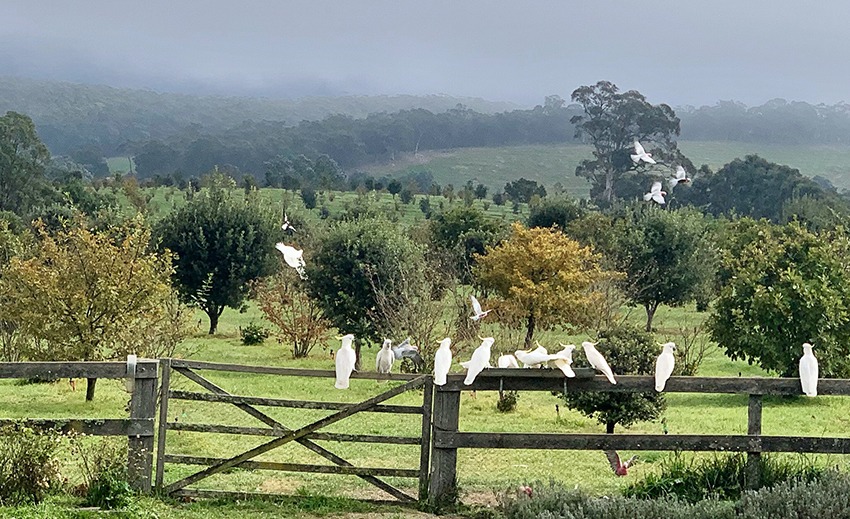
Birds of paradise
Over the past decade or so, Burdis has transformed Ganymede from a “dry, unloved field” to a biodiverse paradise. It comes complete with property-wide bird corridors featuring thousands of native trees, waterways that encourage frogs, beehives and one of the cows from Ganymede’s original herd. She has an ear tag marked “DNEM” (Do Not Eat Me).
“The bird here life is incredible now,” Burdis says. “Some growers have had trouble with insects eating their truffles, but we haven’t. I put it down to the fact that I keep the truffière [truffle plantation] well-maintained. But I also think it’s all the birds.”
This year looks to be an extra-fruitful truffle season at Ganymede. Rains arrived at just the right time and plenty of frosts promise more intensely perfumed truffles.
“Truffles love frost,” Burdis says. “The colder it is and the more frosts there are, the better the truffle. So we’re all really excited about this season.”
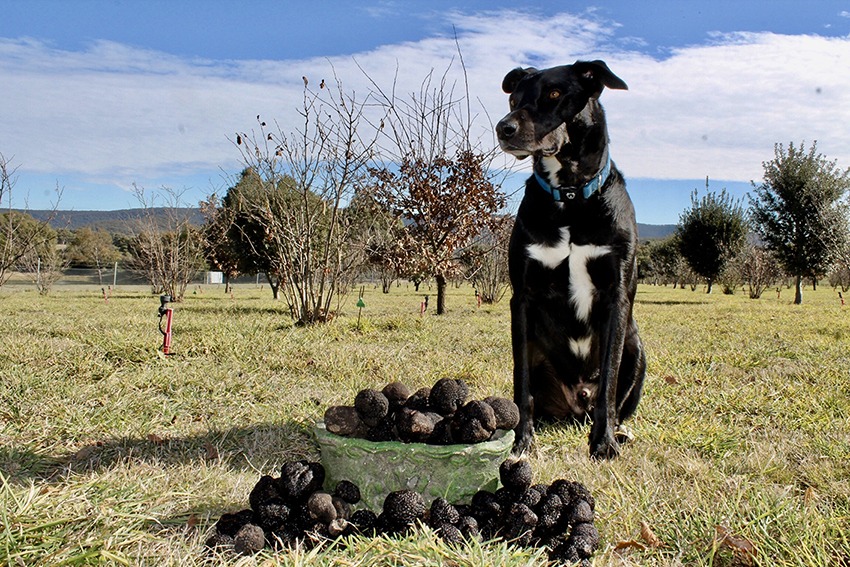
Seeking the witch’s circle
While Burdis has a trained truffle-hunting dog named Zazu to sniff out truffles, these mysterious subterranean mushrooms also leave a visible mark for the keen-eyed hunter.
“When things are going well, the fungus burns off all the grass above it,” Burdis says. “So there’s literally this perfect circle at the base of each tree. The French call it a brûlé, and the English used to call it a witch’s circle, because they believed it could only have been the devil leaving such a mark. When you see it, you know that it’s all happening underneath.
“This year we’ve got lots of brûlés and have had many frosts, so this season will start early. Normally, we kick off at the end of June, but we plan to start harvesting this weekend.”
During harvest season, truffle hunting takes place on Saturdays and Sundays at Ganymede. Burdis then cleans and grades the truffles before dispatching them via express post to customers first thing Monday. You couldn’t get much fresher if you dug them up yourself.
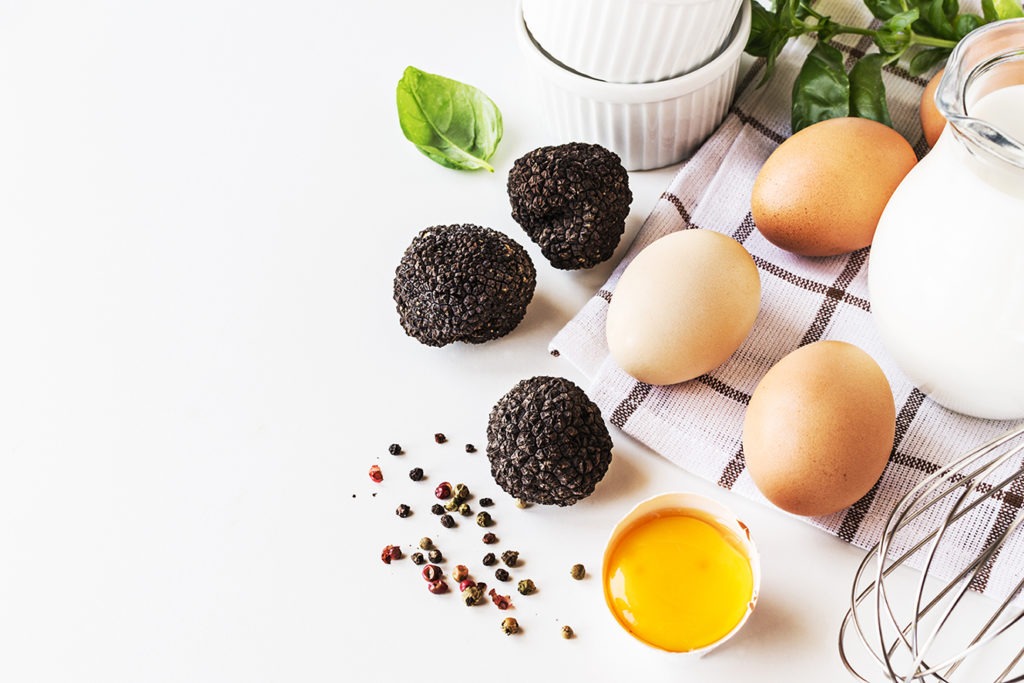
Truffle tips
Over the years, Burdis has found a number of interesting ways to use truffles in her cooking, including a genius hack for making truffled eggs without even having to add any truffle.
“If you put a truffle in an airtight jar with some eggs and store it in the fridge for a few days, the eggs are infused by the truffle through the shell,” she says. “Then you can have a truffled scrambled egg without even using the truffle you’ve purchased.
“You can also infuse a truffle in cream for a day, and you’ll get the most amazing truffle cream that you can use to make truffle ice cream or panna cotta. Afterwards, you just wash the truffle, dry it on a paper towel and put it back in a sealed container in the fridge until you want to use it. Without even using your truffle, you’ve infused eggs and cream.
Burdis also makes truffle butter, which can be used to cook up a delicious pound cake. Or she simply slices up truffles to put on top of a steak. She has even made truffle fudge. However, for newbies who’ve never cooked with truffles before, Burdis says you can’t go past something as simple as shaved truffle over eggs.
“I think nothing beats eggs and truffle,” she says. “You don’t need much, because it’s quite perfumed. Maybe five grams per person for an entrée or 10 grams for a main.
“But I like it fairly generous. I think it’s a shame when you go to a restaurant and you have truffles that aren’t ripe or they don’t give you much; I feel like that doesn’t do them justice.”
For more information about Ganymede Truffles, click here.


